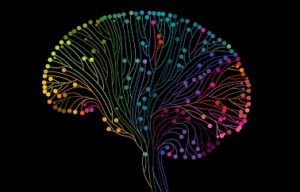Cross-Disciplinary Projects Explore Dystonia Brain Networks to Improve Diagnosis & Treatment
The Dystonia Medical Research Foundation (DMRF) and Cure Dystonia Now (CDN) announced the latest grant awards to advance research toward improved dystonia treatment options and ultimately a cure. Dystonia is the third most common movement disorder, affecting no fewer than 250,000 Americans and potentially millions worldwide. This marks the latest in an ongoing collaboration between DMRF and CDN to push the envelope of what is known about dystonia by funding innovative research projects, with a focus on incentivizing collaborative, cross-disciplinary investigations. Dystonia is not caused by pathology in a specific brain structure, but by dysfunctional circuits of communication between multiple brain areas responsible for coordinating and controlling body movement. This year’s grants reflect holistic and modular approaches to exploring dystonia brain networks.
Awardees are as follows:
Using Functional Connectivity to Optimize Deep Brain Stimulation in Dystonia
Andrea Kühn, MD, University Medicine Berlin
Deep brain stimulation is a neurosurgical therapy that uses an implanted medical device to treat dystonia and other neurological disorders. The medical device delivers electrical stimulation to the areas of the brain responsible for dystonia symptoms. Many dystonia patients respond dramatically to deep brain stimulation therapy, but not all. Dr. Kühn and her team seek to clarify the underlying mechanisms of deep brain stimulation in order to better understand why some patients benefit from this therapy while others do not.
Unraveling Hierarchical Network Loops in Isolated Dystonia
Xin Jin, PhD, The Salk Institute for Biological Studies
The intricate networks in the human brain responsible for controlling body movement are comprised of many millions of neurons across dozens of brain areas. Dr. Jin and his team are working to understand the network activity that underlies dystonia symptoms, and to possibly prevent symptoms from developing. This grant is focusing on blepharospasm, a focal dystonia of the eyelid and brow muscles, as a model to understand dystonia networks more broadly.
Investigating Multimodal Neuroimaging for Probing Brain Networks in Cervical Dystonia
Richard Reilly, PhD, Trinity College Dublin
Dr. Reilly and his team are in search of biomarkers in the brain for cervical dystonia, a focal dystonia that causes involuntary head movements and neck postures. To do so, they will use multimodal analysis on a dataset from structural, resting state, and functional MRI (magnetic resonance imaging) in a group of cervical dystonia patients. They will compare results against a group of patients with spasmodic dysphonia, a focal dystonia of the vocal cords muscles. The goal is to advance understanding of the structural and functional brain differences in cervical dystonia.
Interregional Brain Connectivity in a Mouse Model of Cerebellar-Induced Dystonia
Roy Sillitoe, PhD, Baylor College of Medicine
This project uses a unique genetic mouse model of dystonia and diffusor tensor imaging, a type of magnetic resonance imaging (MRI), to define how specific brain network changes result in dystonia symptoms. This work also seeks to better understand developmental aspects of dystonia, namely why and how dystonia progresses over time. Dr. Sillitoe and team are ultimately seeking to define the functional brain network of dystonia as a way to better target therapies such as oral medications and deep brain stimulation.
* * *
Dystonia is a chronic, often disabling, neurological disorder marked by extreme, involuntary muscle contractions that cause abnormal body movements and postures. Common signs include abnormal movements of the head and neck, excessive blinking, a breathy or choking voice, hand cramps, or a twisted foot. Because dystonia is not better known, symptoms are often mistaken for mental illness, intoxication, or poor social skills. Dystonia impacts people of all ages and backgrounds. There is currently no cure, and though treatments exist there is no single therapy that benefits even a majority of patients.
The Dystonia Medical Research Foundation (DMRF) is the leading dystonia patient advocacy organization. Founded in 1976, the DMRF mission is to advance research toward improved treatments and a cure, promote education and awareness, and provide support resources to affected individuals and families. The DMRF can be reached at www.dystonia-foundation org or 800-377-DYST (3978).
Cure Dystonia Now is a 501(c)(3) non-profit charitable foundation committed to advancing research for more and/or improved treatments, and ultimately a cure, for dystonia. Learn more about Cure Dystonia Now at www.curedystonianow.org.




